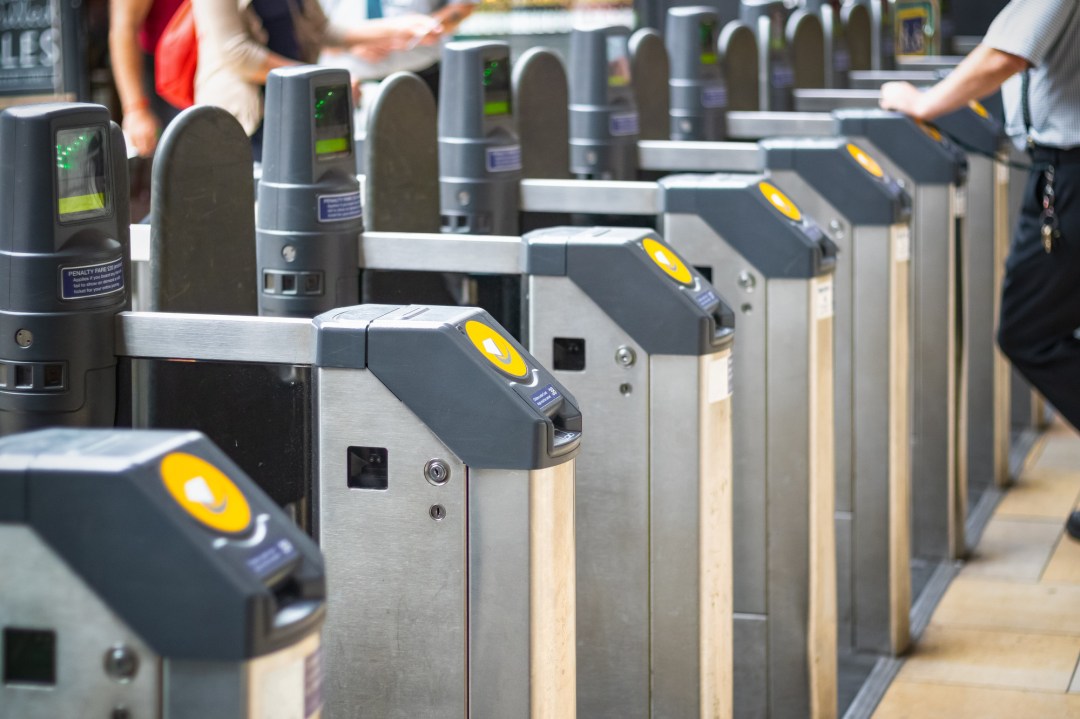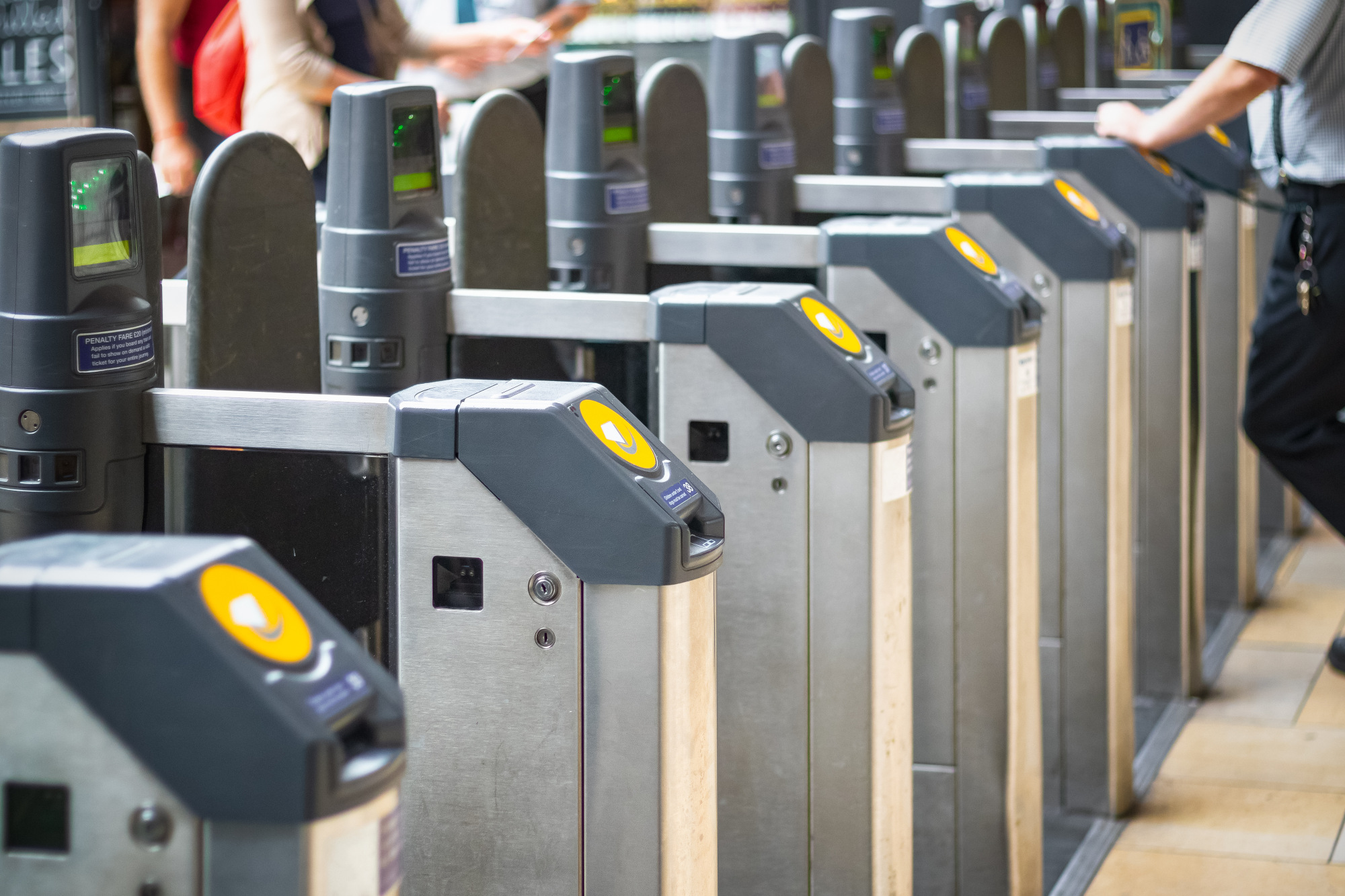In Robert Jenrick’s fare-dodging video, it felt a little unfair for the Tories’ checked-shirt crusader to include that shot of the Tube station assistant with his feet up.
The guy was probably just on his break, and you don’t blame the infantry for the failings of the generals. But on a wider level, the mayor, Sadiq Khan, and TfL management have had their own feet up for nine years now, with results that people are starting to notice.
Today’s London is not, of course, New York in the 1970s. But parts of the London Underground are looking rather like it. Each time I’ve travelled on the Bakerloo Line recently, the train has been covered in graffiti, inside and out. It doesn’t seem to be the same on any other line – yet. But if left unchecked, it will spread, as fare-dodging already has.
Fare evasion on the Tube in 2015, the last full year before Sir Sadiq took office, was 1 per cent. It is now 4.8 per cent, according to a TfL freedom of information request published last week (the 3.4 per cent sometimes quoted is for the whole system, including the buses and Overground).
In 2015-16, the number of penalty fares issued on the Tube was 21,500. In 2023-24, the last full year for which there are figures, it was 12,907. Over the same period, prosecutions for fare evasion on the Tube fell from 5,079 to 2,979. Tube use is down too, to be fair – but by nothing like that much.
There are 3,300 station staff on the Underground. Surely that’s enough to stop a few fare-dodgers? Alas, it turns out it’s not even their job. As Jon Poett, operational policy manager at TfL, put it earlier this year, station staff ‘can report evasion, but their main role is to provide customer service. They are not expected to challenge them.’
The station people do have other important roles: helping passengers with information, dealing with emergencies, stopping people falling under trains or getting trapped in the doors. And, admittedly, one or two less important roles, such as taking part in TfL’s identity-based staff networks, for which paid time off is given. Members of TfL’s LGBT staff group (‘Outbound’ – geddit?) have recently enjoyed, among other things, a Trafalgar Square ‘queer footprints walk and talk’.
According to the mayor’s office, is that ‘removing someone from the network is always a last resort’ and TfL uses a ‘four-step engagement model (engage, educate, encourage, enforce) before taking enforcement action.’
The challenging of fare-dodgers is done by a much smaller cohort of people, ‘transport support and enforcement officers,’ who in fact appear to have been reduced in number, from 450 two years ago to 430 now, according to London Assembly answers, perhaps to pay for some of those queer footprints walks. Of the 430 officers, 147 operate on the Tube – where, in Khan’s words, they ‘respond positively’ to fare evaders.
What this means, according to the mayor’s office, is that ‘removing someone from the network is always a last resort’ and that TfL uses a ‘four-step engagement model (engage, educate, encourage, enforce) before taking enforcement action.’ Over the last year, Tube enforcement officers removed (drum roll) 1,251 offenders from the system. For context, over the same period, the Tube carried 1.8 billion passengers.
Part of the problem is that Khan has never quite believed in collecting fares. He knows he has to, but his heart isn’t really in it. During the pandemic, TfL stopped taking bus fares altogether, saying it was a health risk for the drivers, though they sat behind plexiglass screens and passengers had to walk past them whether they paid or not. As No. 10 transport adviser at the time, I remember insisting directly to him that that had to change if he wanted the government bailout he was asking for.
Meanwhile, London lavishes free travel on hundreds of thousands who do not need it, redistribution in reverse at the cost of higher fares for the working poor. Chris Mullin’s diaries describes how he boarded the same bus outside Parliament one night with a peer and a waiter from the Commons tearoom. Of the three, the waiter was the only one who had to pay.
Under-18s, too, get free bus travel, regardless of family income. In a country with a childhood obesity crisis, London subsidises children not to exercise. It may even have helped worsen fare-dodging; young people have become used to not paying, and the vast majority of fare-dodgers are young adults.
The other part of the problem, I think, is a general unwillingness to lead or even to manage. Almost nothing, not just fare-dodging, is being gripped. TfL’s unpaid debts (among them unpaid fines and penalties on fare-dodgers) have trebled in five years. Roadworks are an uncoordinated mess. Little progress has been made on traffic reduction and bus priority. The trains feel grubbier than they used to; there is dirt that no one ever cleans in the corners of the seats. Even the thing Khan would say he has led on, the ultra-low emission zone, is (for all the noise) a mouse of a policy, with modest effects on pollution.
The only management ever practiced is media management. Did you notice, last week, how a rise in the congestion charge was announced on the same day as Khan issued a report, under embargo, demanding the legalisation of cannabis? You probably didn’t: in the next day’s papers, as was doubtless intended, the second of those stories swamped the first.
Khan has always been saved by the fact that his opponents get the tone wrong. The London Assembly Tories, and sundry online ranters, treat him as a kind of disaster. But he’s not actively malign, just lazy and second-rate: a machine and gesture politician in the mould of New York’s David Dinkins. And he is beatable. Last year, even a really bad Tory candidate did far better against Khan than the Conservative party managed against Labour at the general election a few weeks later. Everyone says Jenrick’s video was part of a leadership bid. But there’s a better, more powerful job he might want to apply for instead.







Comments